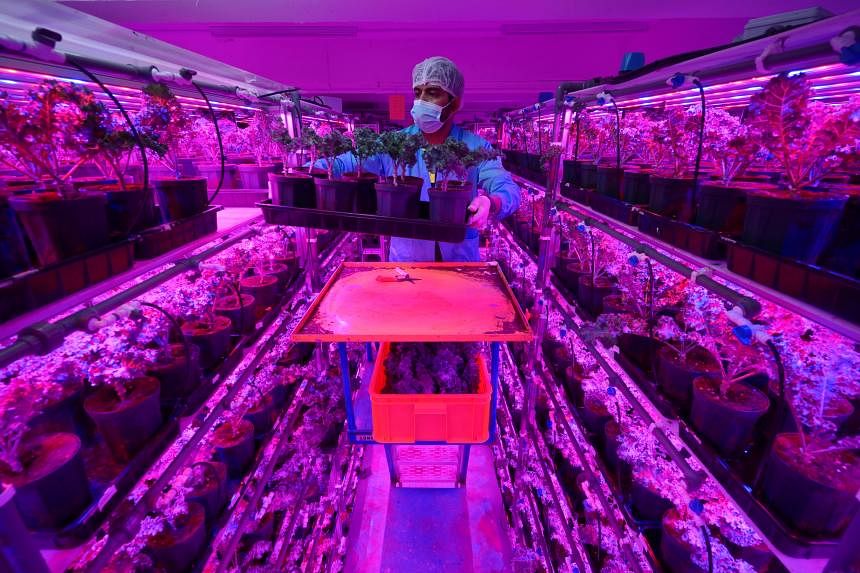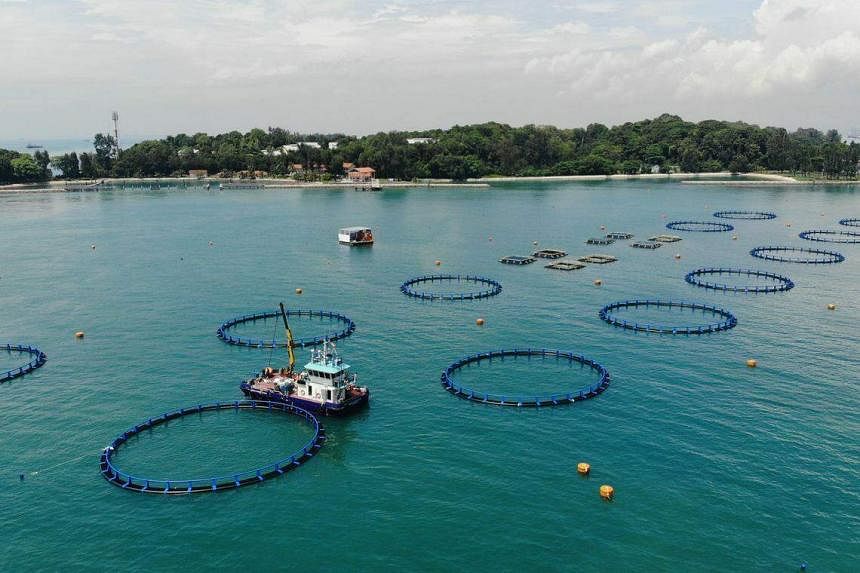SINGAPORE (ANN/STRAITS TIMES) – Recent closures and downsizing of local farms in Singapore have raised concerns about the country’s ambitious goal of producing 30 per cent of its nutritional needs by 2030. Contributing factors include construction delays, rising electricity costs, and the exit of vegetable and coastal fish farms. In 2023, Singapore produced only 3.2 per cent of its vegetables and 7.3 per cent of its seafood. Since 2021, vegetable production has stayed below 5 per cent of total consumption, while seafood production has fluctuated between 7 per cent and 8 per cent, far from the 30 per cent target. How did this situation develop?

Plant paradox
Vegetable farms, particularly those embracing technology, face significant challenges. Mega indoor farm IFFI has shut down, Sky Greens is scaling down production, and VertiVegies abandoned plans for an indoor farm. These closures highlight industry difficulties, including low profit margins, high electricity costs, and insufficient consumer demand. Financial assessments by The Straits Times reveal that many companies, including Sustenir and Sky Greens, struggle to turn a profit despite years of operation. Edwin Ong, founder of urban farming solutions provider Arianetech, predicts further farm closures in 2024 due to the harsh realities of high-tech farming in Singapore.
When push comes to shove
Singapore’s push for high-tech vegetable farming is proving to be a mixed blessing. To boost land productivity and encourage farms to adopt technology, the SFA introduced grants like the SGD60 million Agri-food Cluster Transformation Fund. These initiatives aimed to increase yields significantly, with high-tech farms potentially producing over 1,000 tonnes of produce per hectare annually, compared to around 130 tonnes for traditional farms. The urgency for productivity was underscored during the COVID-19 pandemic, prompting local farms to ramp up production. In 2020, the SFA awarded SGD39.4 million in grants to accelerate local food production. Investor interest in high-tech indoor farming surged globally, with companies like Sustenir and Archisen securing funding. However, challenges emerged in 2022, driven by spikes in electricity prices due to geopolitical events like the Russia-Ukraine war. Indoor farming faces hefty costs for LED lights and air-conditioning, while outdoor greenhouses grapple with high cooling expenses. Lee Yuan Hao from GKE Agritech highlighted a three to fourfold increase in electricity costs during the pandemic, prompting his farm to install solar panels to mitigate expenses. Labour costs also pose a persistent challenge, leading some farms to explore automation solutions, albeit with high capital investments. Despite the hurdles, innovative approaches like autonomous mobile robots are helping farms navigate labour shortages and improve safety.
Green fingers or tech whizzes?
The push for technology in farming may have inadvertently attracted players more focused on selling farming solutions than growing vegetables, said Dr Mandar Godge, CEO of agritech consultancy Grain International. Farms prioritising novel high-tech solutions before considering crop types often struggle due to high operating and capital costs. This might explain the closure of mega indoor farm IFFI, which focused heavily on costly technologies without sufficient revenue. Conversely, the most profitable vertical farms customize their systems based on optimal plant growth conditions. Farmers stress the importance of plant science alongside technology. For instance, Ray Poh of Artisan Green keeps costs low by researching optimal nutrient and lighting levels for each plant. This approach informed the setup of his new farm in Sungei Tengah, which will automate crop production to minimise labour costs.

The future of farming
Observers say recent farm closures do not spell the end of local food production. Farms could improve profitability by focusing on higher-value crops, such as those with more vitamins and health benefits. While high costs persist due to ongoing conflicts, farms can stay afloat if consumers support local produce and pay a premium. Innovative marketing and product differentiation, like Sustenir’s nutrient-loaded “Kalming Kale,” are also essential. Sustenir aims to increase revenue by targeting health-conscious consumers willing to pay more for added benefits.
Efforts to support local farms include an Alliance for Action (AfA) involving farms, supermarkets, and restaurants to aggregate demand for local produce. Initiatives like selling aggregated local greens and fish at FairPrice supermarkets aim to boost farm revenue. However, many farms seek more support. Suggestions include supermarkets taking smaller margins from local produce and government-organised events sourcing from local farms.
Jack Moy, co-chair of the AfA, noted that the local market is small, and support from larger buyers like the Government can help generate the volume needed for farms to sustain operations.


